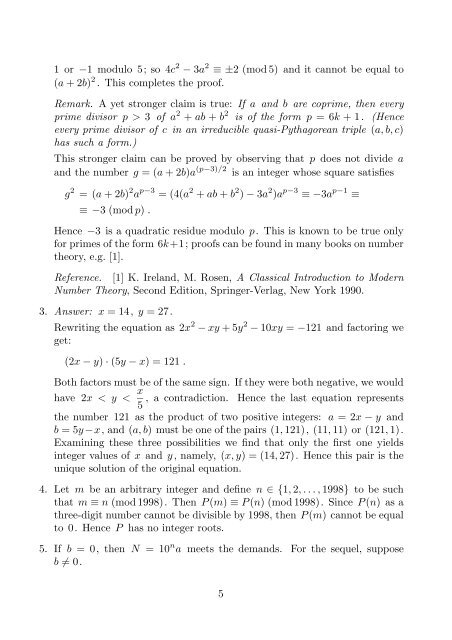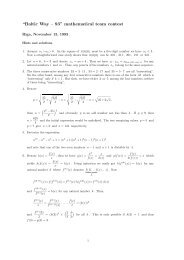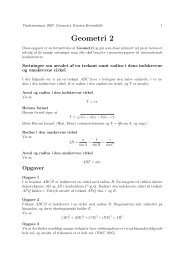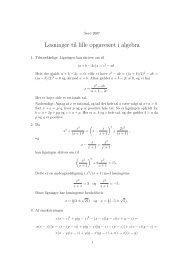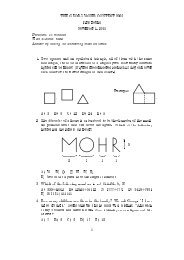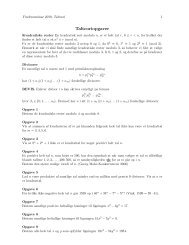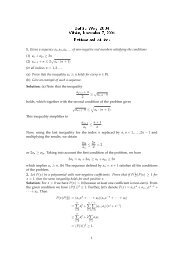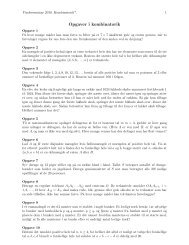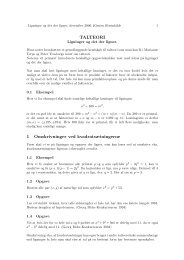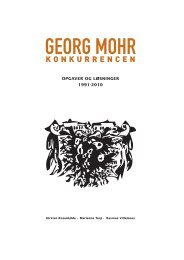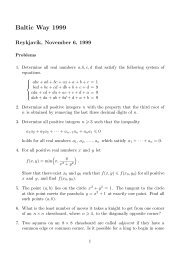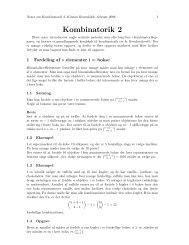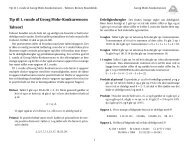You also want an ePaper? Increase the reach of your titles
YUMPU automatically turns print PDFs into web optimized ePapers that Google loves.
1 or −1 modulo 5; so 4c 2 − 3a 2 ≡ ±2 (mod 5) and it cannot be equal to<br />
(a + 2b) 2 . This completes the proof.<br />
Remark. A yet stronger claim is true: If a and b are coprime, then every<br />
prime divisor p > 3 of a 2 + ab + b 2 is of the form p = 6k + 1. (Hence<br />
every prime divisor of c in an irreducible quasi-Pythagorean triple (a, b, c)<br />
has such a form.)<br />
This stronger claim can be proved by observing that p does not divide a<br />
and the number g = (a + 2b)a (p−3)/2 is an integer whose square satisfies<br />
g 2 = (a + 2b) 2 a p−3 = (4(a 2 + ab + b 2 ) − 3a 2 )a p−3 ≡ −3a p−1 ≡<br />
≡ −3 (mod p) .<br />
Hence −3 is a quadratic residue modulo p. This is known to be true only<br />
for primes of the form 6k+1; proofs can be found in many books on number<br />
theory, e.g. [1].<br />
Reference. [1] K. Ireland, M. Rosen, A Classical Introduction to Modern<br />
Number Theory, Second Edition, Springer-Verlag, New York 1990.<br />
3. Answer: x = 14, y = 27.<br />
Rewriting the equation as 2x 2 − xy + 5y 2 − 10xy = −121 and factoring we<br />
get:<br />
(2x − y) · (5y − x) = 121 .<br />
Both factors must be of the same sign. If they were both negative, we would<br />
have 2x < y < x<br />
, a contradiction. Hence the last equation represents<br />
5<br />
the number 121 as the product of two positive integers: a = 2x − y and<br />
b = 5y −x, and (a, b) must be one of the pairs (1, 121), (11, 11) or (121, 1).<br />
Examining these three possibilities we find that only the first one yields<br />
integer values of x and y , namely, (x, y) = (14, 27). Hence this pair is the<br />
unique solution of the original equation.<br />
4. Let m be an arbitrary integer and define n ∈ {1, 2, . . . , 1998} to be such<br />
that m ≡ n (mod 1998). Then P (m) ≡ P (n) (mod 1998). Since P (n) as a<br />
three-digit number cannot be divisible by 1998, then P (m) cannot be equal<br />
to 0. Hence P has no integer roots.<br />
5. If b = 0, then N = 10 n a meets the demands. For the sequel, suppose<br />
b �= 0.<br />
5


